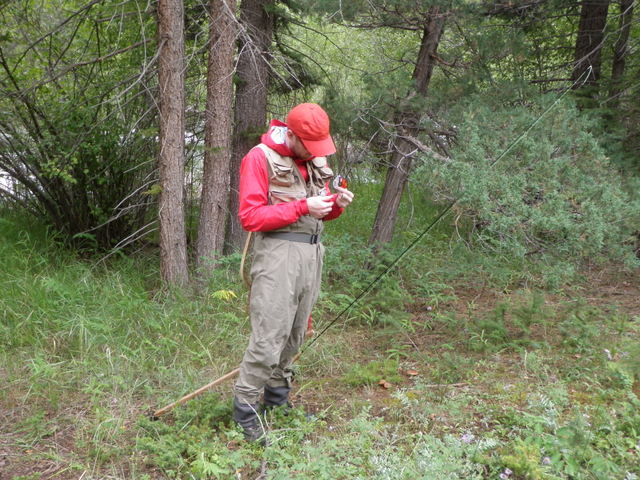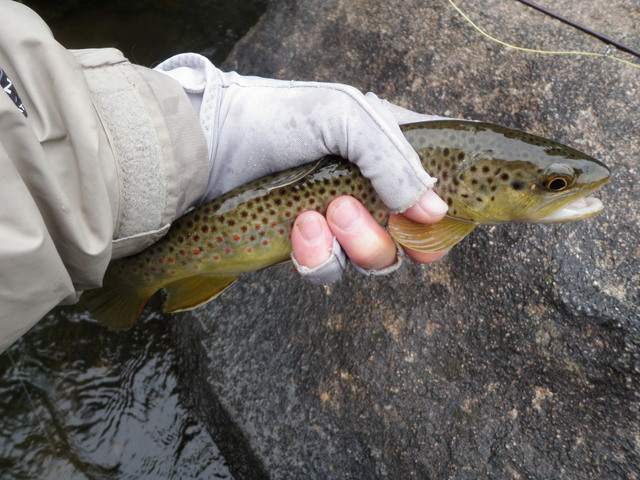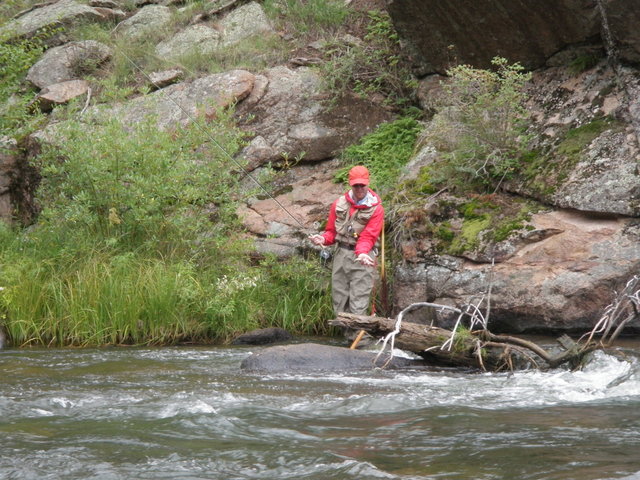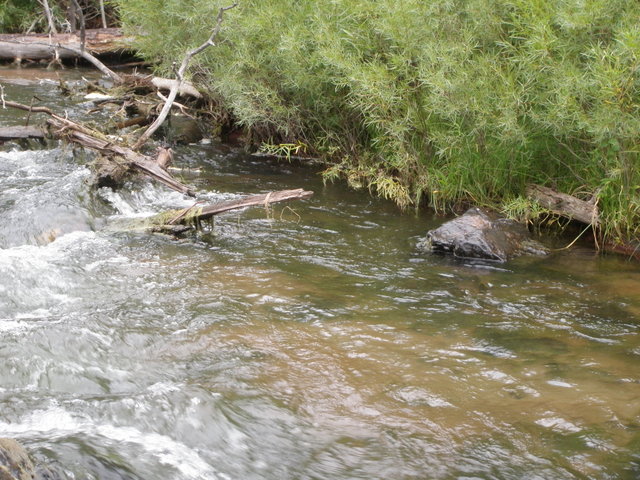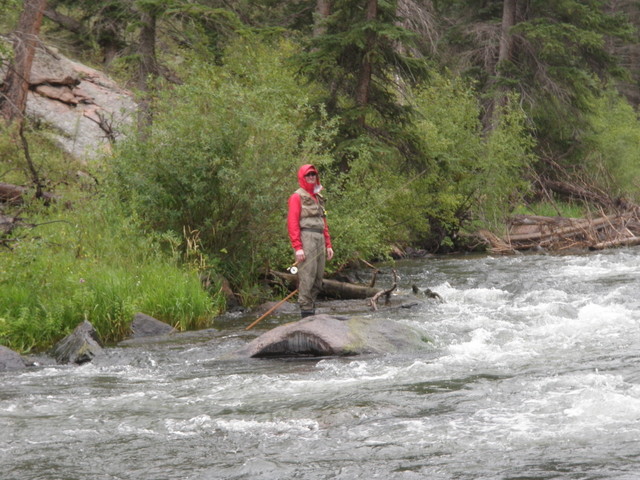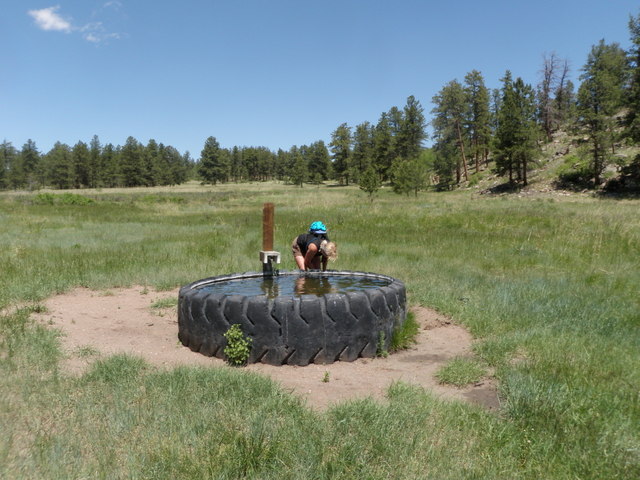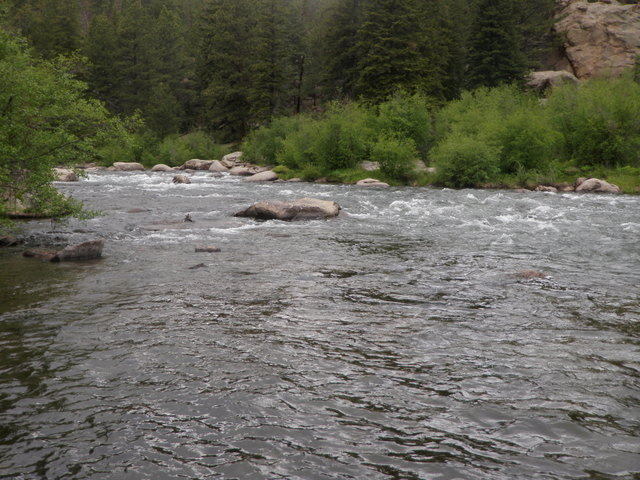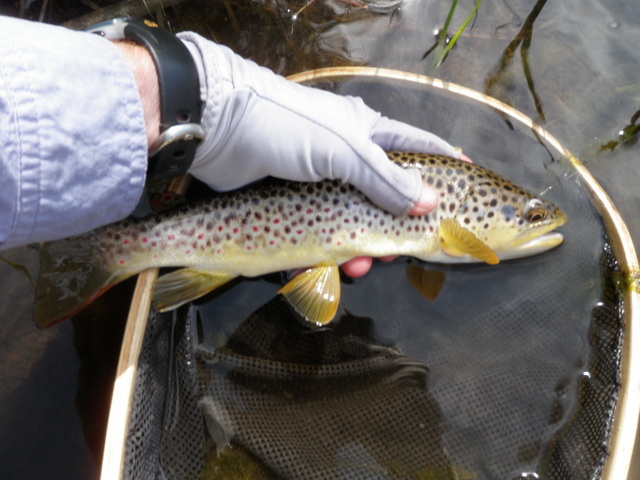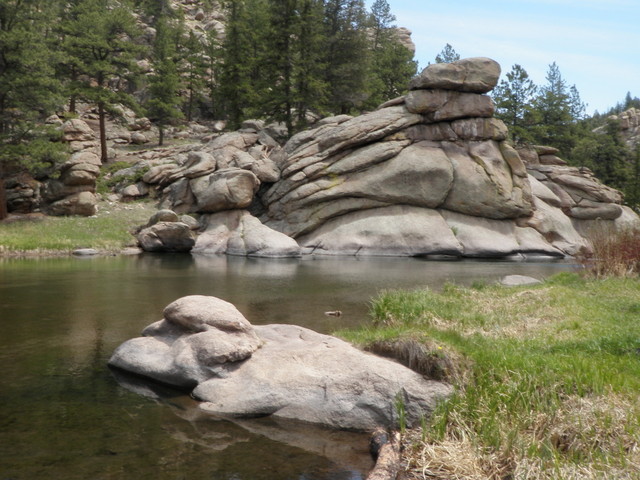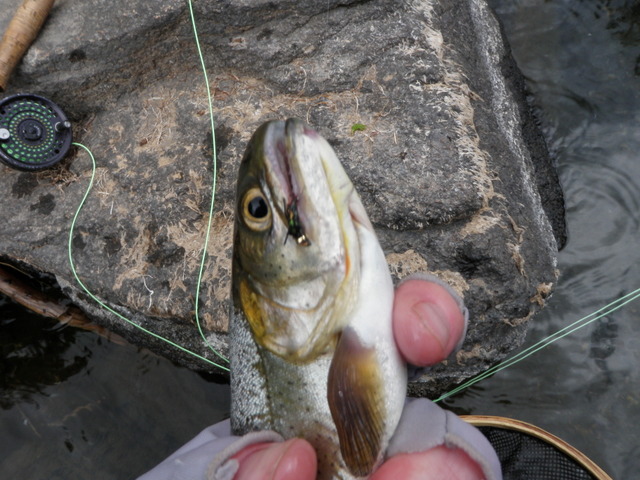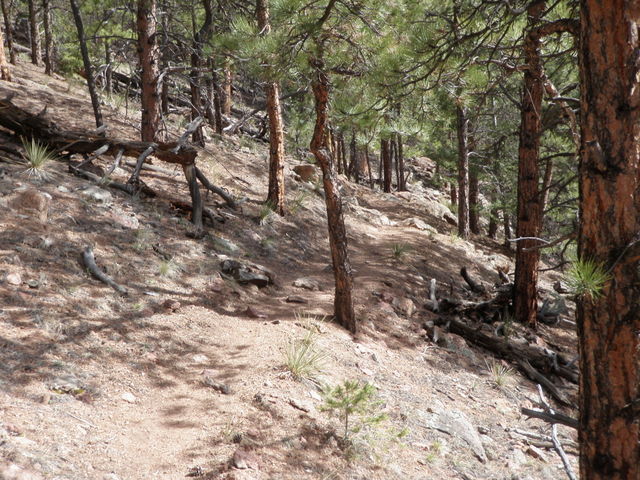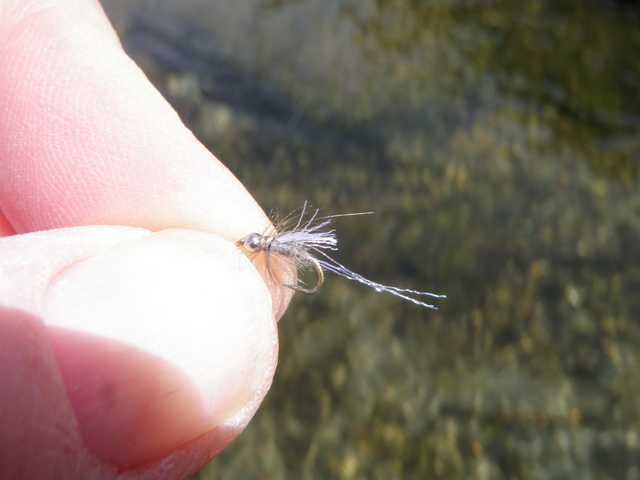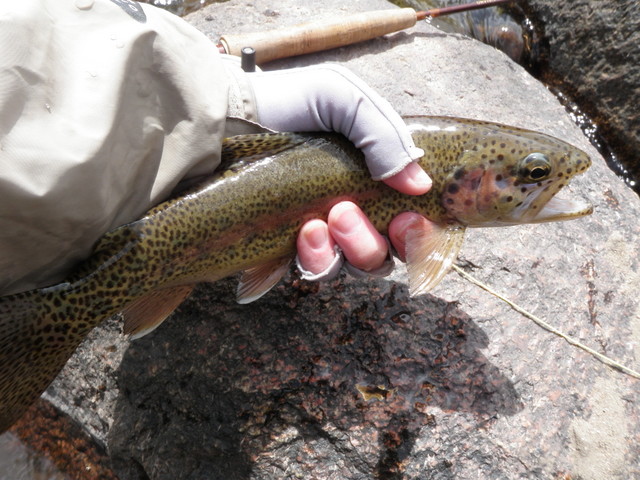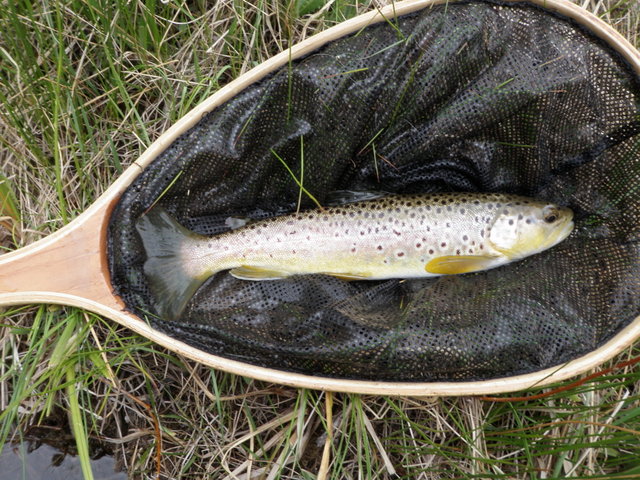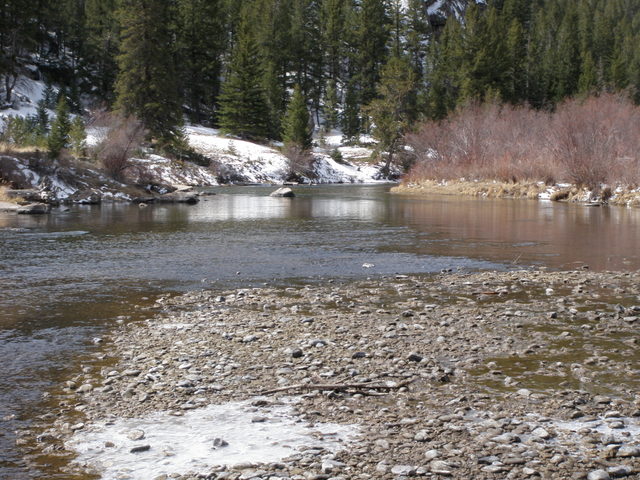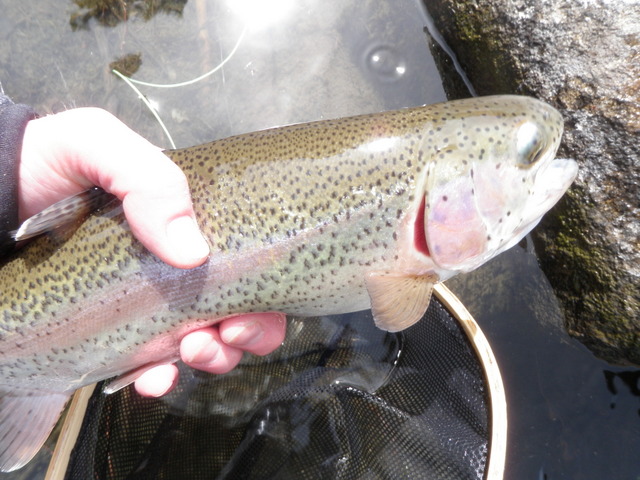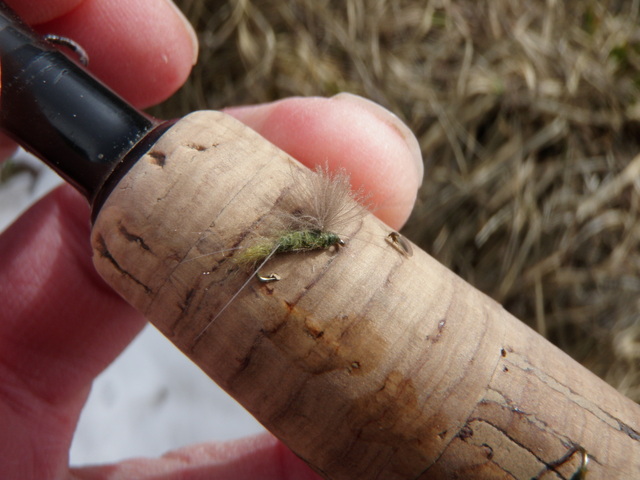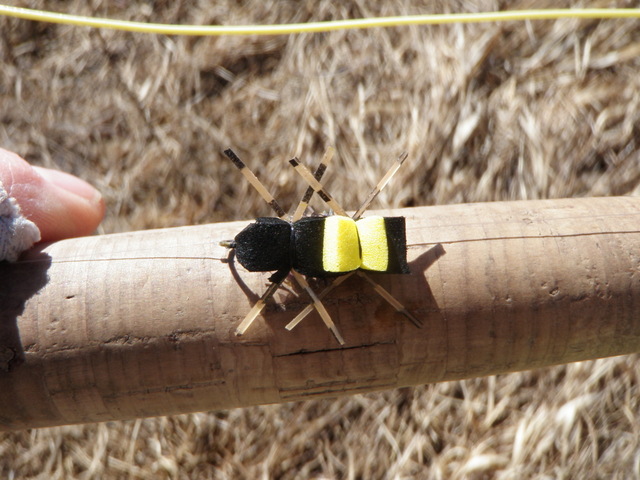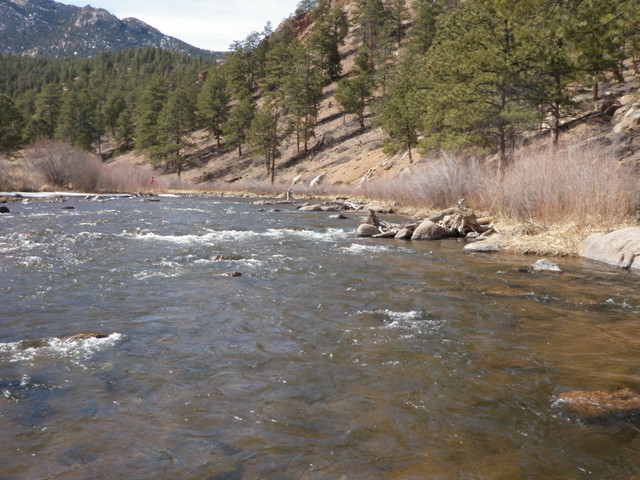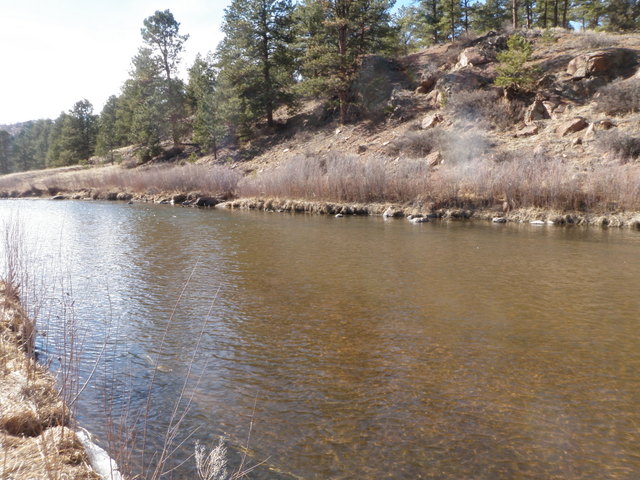Time: 12:30PM – 5:30PM
Location: South Platte River
Fish Landed: 26
South Platte River 08/28/2015 Photo Album
All is well that ends well. The real hero of this story is my lovely wife, Jane, who converted a potential day of frustration into one of the better outings of the season.
The story begins with my trip to the Elk River in British Columbia. While there Jake Chutz of Montana Fly Company convinced me to purchase some Simms neoprene wading booties for wet wading during hot summer days. I tried them out on the East Fork of Brush Creek, but I was not totally sold on the concept because my bare legs were exposed to thistles and thorns, and I needed to reapply sunscreen often to compensate for getting in and out of the water repeatedly. In order to overcome these negatives, I purchased a pair of quick dry pants that can be converted to shorts. I anticipated that using the pants in combination with the wading booties would make wet wading an enjoyable method of fishing Colorado streams.
One of my favorite areas to fish is the South Platte River, where I am required to hike for three miles from the trailhead to the river. As I was anxious to experiment with my new wet wading set up, I felt that this would be a perfect test. On previous trips I lugged my waders, wading boots, rod, reel, and fishing pack in a regular backpack. The three mile hike with a heavy load put significant stress on my neck, shoulders and back; and after a day of fishing, the three mile return was quite taxing. For this reason I only made the trek one or two times a year, as I needed a month or two for the tiresome aspect of the experience to fade from my memory.
Sun and Mist
With my new fishing apparel purchases, I could hike to the river in my wading boots and quick dry pants, and the only equipment I would need to carry on my back would be my normal fishing backpack which contained water and a raincoat. I decided to evaluate my new hike-in summer fishing approach on Friday August 28, and my wife, Jane, decided to accompany me.
The trailhead for this South Platte venture is two hours and fifteen minutes from our home in Denver, and the hike generally adds another one hour and fifteen minutes. In order to allow myself to begin fishing by mid-morning, I like to camp near the river the night before. Jane and I adhered to this plan by making the drive on Thursday, and we stopped for dinner along the way and then set up our tent before dark.
A Rocky Section with More Mist
The flows in the section of the river that I wished to fish were 157 CFS. This is a bit high, but I fished the area at 180 CFS several years ago with excellent results, so I was actually optimistic that the fishing would be good. Also above normal flows are a welcome change from the normal low clear difficult conditions present on most Colorado streams in late August. Everything seemed to be falling in place for a fun fishing trip to the South Platte River.
On Friday morning after eating breakfast and packing our camping gear, we arrived at the trailhead by 9AM. I was already attired in my quick dry pants, so after I pulled on my wading booties and boots and completed all my normal preparations for a day of fishing, we began our hike. I assembled my Sage four weight four piece rod, but I did not string the line because I do not normally do that until I arrive at the stream so I can observe the water before deciding on what flies to use. We hiked for a couple miles with Jane setting the pace, and I became annoyed with constantly getting my rod entangled in low overhead branches. Also I tended to gain on Jane and came close to tapping her with the rod several times, so I decided to reverse the position of my rod and began holding it with the tip facing backwards.
We arrived at the river by 10AM and established a base camp, and then Jane walked down the path with me for another .5 mile to the point where I planned to enter the river. I gave my camera to Jane so she could record my maiden entry into the cold river with my wet wading uniform. I stopped at the edge of the river while Jane looked on and began to string my rod with the fly line. When I reached the tip section, my jaw dropped, and my facial expression made an abrupt shift from anxious anticipation to deep gloom. A tip section was no longer present on my rod! My first concern was the cost of buying another tip section for my rod, but rather quickly this shifted to the anger and frustration that results from the sudden shattering of all plans for a day of fishing on one of my favorite remote stretches of Colorado water.
We had camped in order to be on the water early, so I could maximize my fishing time to compensate for the arduous hike. I purchased the wading booties and quick dry pants to test, and now that was in jeopardy as well. What could I do besides cry? As usual Jane was the voice of reason. She suggested that we retrace our steps back to the base camp and carefully look for the rod tip along the way. If we did not find it by the time we arrived at the base camp, we would need to hike back along the entry trail and look for it along the way. The worst case scenario resulted in our return to the car to pick up my spare tip, and then we could return to the river to fish. We were retired and had all day, so if I needed to fish later to make up for lost time in the morning, that would be the answer.
I meanwhile was in the depths of despair. I was mourning the loss of my rod tip and convinced that my carefully planned day of fishing was ruined as well. We began the process laid out by Jane, but the rod tip did not appear along the trail between my planned fishing entry point and the base camp. When we arrived at the base, I shed all my fishing gear except my wading staff which now morphed into a walking stick. We commenced a slow walk along the trail we had just covered. Before we reached the point where the trail veers away from the river, we encountered a couple on their way in from the trailhead. We asked if they noticed any rod tips, but they both replied no, but they really were not looking for one. Of course my first thought was that they probably stepped on it and crushed it.
We continued up the steep ascent away from the river. Jane suggested that I could move ahead at a faster pace while she moved at a slower methodical rate, but I was concerned that she might find it and have no way to communicate this information to me, so we stayed together. We covered roughly one and half miles from the base camp when Jane suddenly cried, “There it is!” I was in disbelief, but I turned and looked back, and she held the fragile fly rod tip in her hand. Even more amazing was the fact that I walked past the very rock where she found the rod tip, and I never saw it. The decision to not separate was now looking quite fortuitous. Jane handed me the rod section and suggested that I could now return at a faster pace, since she knew how anxious I was to fish.
The Found Rod Tip
I hustled back along the trail to our base camp and decided to eat my lunch since it was now approaching noon. Just as I finished lunch, Jane arrived and agreed to once again walk to the entry point and take a photo. We repeated the entire process, and this time we followed it through to completion. I entered the river with all four sections of my rod in place, and then I knotted a Chernobyl ant, beadhead hares ear and salvation nymph to my line. I thanked Jane for finding my rod tip and accompanying me on this adventure, and I turned my attention to fishing. I lost a couple hours, but at least I was now in a position to salvage some fun from a day that I prematurely wrote off.
Dave’s First Attempt at Wet Wading with Quick Dry Pants
I worked my way upstream methodically casting the dry/dropper trio for thirty minutes, but no fish responded. I was beginning to seethe with frustration since I suffered through many trials and tribulations to get to this point, and now the fish were not cooperating. But once again I was being overly pessimistic, and finally a ten inch brown trout grabbed the salvation nymph at the tail of a deep pocket. I was on the board, and the remainder of the day would raise my spirits and justify the long hike and search. The river was too high to safely cross to the opposite bank, so I continued working along the west side. This necessitated many backhand casts which created wear and tear on seldom used shoulder and back muscles. In addition I was not as accurate, and more nasty snarls resulted from backhand casts and three flies.
Nice Pocket Water Section
Despite these hassles I persisted, and between 1:00PM and 3:30PM I landed sixteen trout on the three fly system that I began with. All the landed fish were brown trout, and quite a few were in the twelve to thirteen inch range, and they displayed vivid spots over a silvery gold background. This was the fishing that I worked so hard for. I love moving quickly and popping three to five casts to likely areas, and the fish were rewarding me frequently by snatching the trailing salvation or hares ear.
Nice Vivid Spots on This Wild Brown
By 3:30 I reached a nice long pool, but the deep areas were not delivering fish on Friday, so I climbed to the path and circled around to the faster run that fed the pool. As I was doing this I ran into Jane, who was cautiously walking toward me to confirm my well being and progress. I could see the large rock across from the base camp, so I told her I planned to fish to that point, and then I would quit, and we would commence the long return hike.
One of the Better Brown Trout
When I re-entered the river I spotted quite a few tiny blue winged olives floating up from the surface, so I removed the salvation nymph and replaced it with a RS2. For the next two hours I worked upstream to the base camp pool and landed ten more fish. Unlike the early afternoon, two rainbows landed in my net, and these were probably my best fish on the day. Both the rainbows sipped the RS2, but the hares ear continued to outproduce the smaller nymph. During this time I also experienced two awful tangles, and quite a few long distance releases. I attribute the higher rate of momentary hook ups to the tiny size 20 hook contained in the RS2.
The Second Rainbow
At 5:30PM I reached the base camp and prepared for the return trip. We departed by 6PM and reached the Santa Fe by 7:15PM. The wet wading experiment worked out well, as I felt comfortable for the entire afternoon except for a few occasions when some large clouds blocked the sun, and some wind kicked up. Overall however it worked well and cut down greatly on the weight on my back and the associated neck and shoulder strain. We stopped at a brew pub on the way home and enjoyed craft brews and a delicious late dinner. Even this did not begin to repay Jane for salvaging my fishing day on August 28. Perhaps the best gift for Jane was the absence of whining and complaining that would have occurred should I have lost the rod tip and missed a day of fishing. Jane is one of a kind, and I cannot thank her enough. All is well that ends well.

